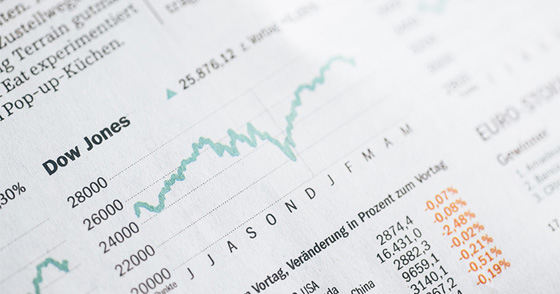I work with companies that want to produce bold and innovative content on financial and commodity markets, macroeconomics and trading and investor psychology. I you’d like to know more about how I can help grow your business please get in touch. Some examples of recent projects are outlined below.
Betting & Trading smarter: The Bulletproof Diet (Mercurius)

We all know that too little exercise, lashings of fast food and copious amounts of alcohol are bad for us. If only it were so simple to lead a healthy life by just knowing where the pitfalls lie. The key of course is only dabbling in small doses and above all being consistent. Throw in a tiring, stressful week at work and the opportunity to consume and the best laid dietary and exercise routine goes out the window.
The same delicate balancing act faces sports bettors and financial investors. In my previous article I detailed the top 10 emotional and cognitive biases. All told psychologists have identified that we suffer from well over 100 biases. Knowing those biases helps us know what to avoid. But in the same way that we know where the dodgy dietary choices lie, to never succumb to temptation is akin to admitting you are a robot…(read article)
Behavioural Finance: To exploit behavioural biases focus on the folly of the many, not the few (Mercurius)

One of the greatest sources of edge is the one and only thing you have any power over – your own behaviour. If you can keep your head, while everyone else is losing theirs, then you can be there to exploit the mistakes of others and scoop up what is being left on the table.
Behavioural biases are the most persistent source of advantage in both financial and betting markets. Yet they are the most difficult to exploit. These biases have always been present and always will; human nature doesn’t change after all. We may think that we have evolved into smart people, capable of coldly calculating the odds of an event occurring and betting when the odds are in our favour. Unfortunately, our brains are still running with the same software that our ancestors had, thousands of years ago….(read article)
Stock trading is easy and the madness of crowds (Mercurius)

During the first few months of 2020 the share price of a small Chinese company listed in the US rose 1,800%. No one really knew what the company did, or even whether they were still operating. The company had failed to provide any public disclosures since listing on the stock-market five years earlier.
The company was called Zoom Technologies and had the ticker symbol ZOOM. Unfortunately for those investors who bought into the rapid advance, Zoom Technologies has nothing to do with Zoom Communications, the video conferencing service that everyone has been using to hold meetings and virtual drinking sessions since lockdown. Concerned that investors might be getting confused, the US Securities and Exchange Commission promptly suspended trading in the shares for a brief period. Well done that lucky investor that realised their mistake (or the mistakes made by others) before the shares were halted….(read article)
Alternative reality: The risks and opportunities of investing in alternative assets (Mercurius)

Asset allocation has traditionally been thought of as the right mix of stocks (equities), government bonds and cash. Enough risk to generate returns but enough safety to meet unexpected expenses and not run the risk of a disastrous hit to your portfolio. When you are young the risk/reward ratio of holding riskier more volatile assets is in your favour, but as you get older investors typically want to taper their exposure to risky assets to ensure they have enough to retire on.
Benjamin Graham is often considered to be the founder of value investing and one of the most influential investors of all time. Graham recommended that investors should use a 50-50 stock-bond allocation as a baseline, and then shift as far as 25-75 in either direction, based on market conditions. Discussing the strategy in his book, “The Intelligent Investor,” he recommended:
“The sound reason for increasing the percentage in common stocks would be the appearance of ‘bargain price’ levels created in a protracted bear market. Conversely, sound procedure would call for reducing the common-stock component below 50% when in the judgment of the investor the market level has become dangerously high.”…(read article)
The 7 lessons the 2008 Global Financial Crisis (GFC) and other crises can teach investors (Mercurius)

Over time investors become conditioned to assume that market returns are relatively tranquil, that they closely follow something akin to a normal distribution curve. Most market outcomes are well defined and fall within the centre of the distribution, or so that’s what investors think. This view is reinforced when they see equity markets gradually appreciate year after year. Investors may even leverage up their portfolios, betting that market returns will broadly follow this benign profile.
The tails at both ends of the curve reflect extreme market outcomes (either extremely positive or negative), but which are assumed to be very unlikely to occur. And since tail risks do not happen very often (and are difficult to quantifying), investors fail to take account of them in their portfolio – either by seeking to gain or protect themselves from those events….(read article)
A crude bet: What gyrations in the oil market have in common with betting markets (Mercurius)

In the space of a few short months oil markets switched from scarcity to abundance. This article explains what happened and highlights how oil traders seek to gain an edge by considering how other participants in the market react, thinking through what the second order consequences could be, changing your time perspective to find the best value bets, and finally employing big data and systematic strategies to gain insight and taking the emotion out of trading.
Cast your mind back to early January 2020. The United States had just launched a drone attack near Baghdad’s airport. An Iranian major general, Qassem Soleimani was killed in the strike. Trending on Twitter at the time was the hashtag #WWIII….(read article)
By .